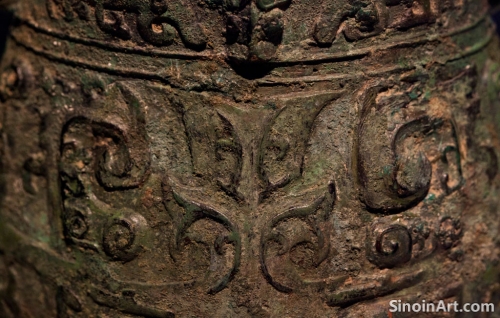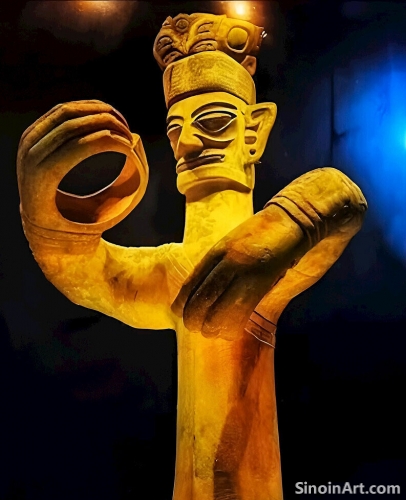The Use of Bronze in Ancient Chinese Transportation: Bridges, Road Components, and Infrastructure
|
While bronze is often associated with objects of ritual and warfare, its use extended to the creation of elements in ancient Chinese transportation systems. Bronze was used to create components for bridges, road supports, and other elements of infrastructure, highlighting its value in large-scale engineering projects. The use of bronze in infrastructure helped to connect different regions of the country and to further promote trade and travel.  Bronze was sometimes used to create bridge components, including support beams, decorative railings, and other structural elements, enhancing both the strength and visual appeal of these important crossings. The careful use of bronze to create bridge components helped to enhance their both function and durability. These components were an essential element in the design and long term effectiveness of bridges.  Bronze was also used to create measuring tools and surveying instruments that were essential for mapping roads, planning routes, and the construction of infrastructure elements that helped to make travel more reliable and more effective. These instruments helped to create a more standardized and reliable infrastructure system.  The use of bronze in various components of transportation infrastructure is a testament to the technical expertise of ancient Chinese engineers and also the importance of trade and travel. The precise engineering skills of the ancient world are clearly visible in the durable and well-planned design of these systems. The use of bronze made these projects possible and helped to shape the political and economic landscape of ancient China. |
Tag : bronze transportation, ancient bridges, road components, Chinese infrastructure, engineering
Related information
- The Evolution of Bronze Mirror Design: From Early Simplicity to Ornate Patterns and Narrative Scenes
- The Use of Bronze in Ancient Chinese Textile Production: Tools and Decorative Elements
- Bronze Ware and Ancient Chinese Medicine: Tools and Beliefs About Health
- Bronze Ware and the Representation of Mythical Creatures: Dragons, Phoenixes, and the Realm of the Supernatural
- The Depiction of Daily Life on Bronze Artifacts: A Window into Ancient Society
This article explores the evolution of bronze mirror design in ancient China, highlighting the shift from simple forms to more complex designs, including the use of intricate patterns, symbolic imagery, and narrative scenes, demonstrating the interplay between art, technology, and cultural change.
This article explores the use of bronze in ancient Chinese textile production, highlighting its role in creating tools like hooks and needles, decorative elements like buckles, and revealing the interplay of metalworking and textile craftsmanship.
This article explores the use of bronze in ancient Chinese medicine, highlighting the creation of surgical instruments, diagnostic tools, and vessels used for herbal remedies, and revealing the intersection of metallurgy and medical practices.
This article explores the representation of mythical creatures on Chinese bronze ware, highlighting the symbolic power of dragons, phoenixes, and other fantastical beings, and revealing their connection to ancient Chinese beliefs about the spirit world.
This article explores the depiction of daily life on Chinese bronze artifacts, highlighting scenes of hunting, farming, cooking, and social gatherings, and revealing insights into the social structures, economic activities, and everyday routines of ancient Chinese society.